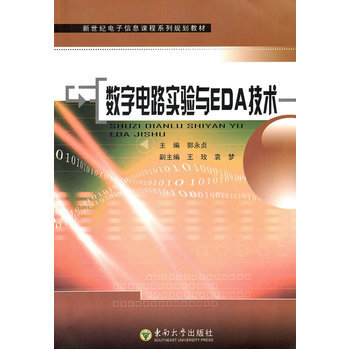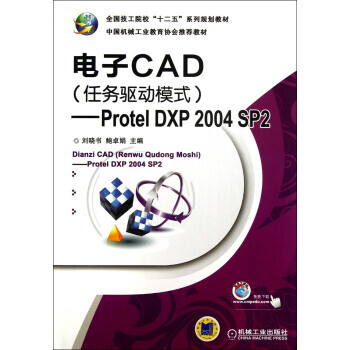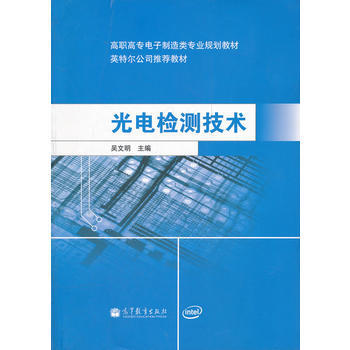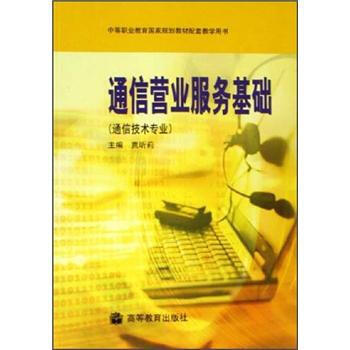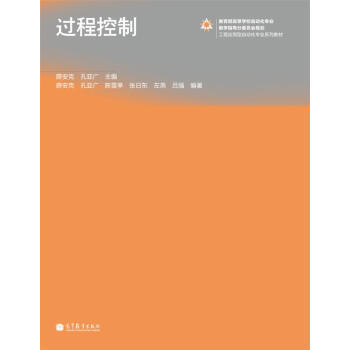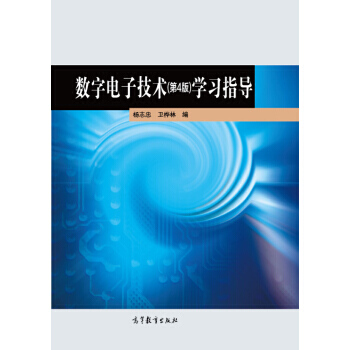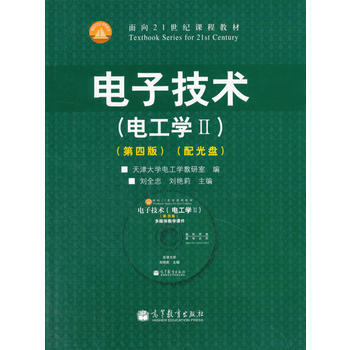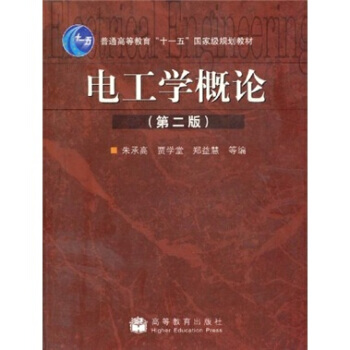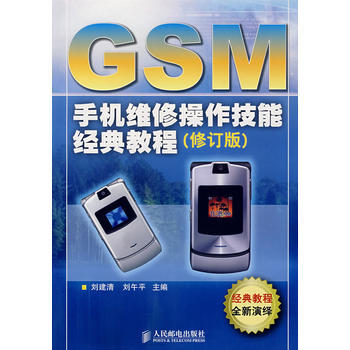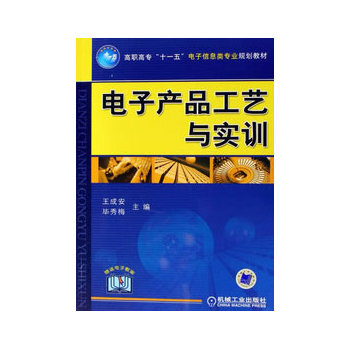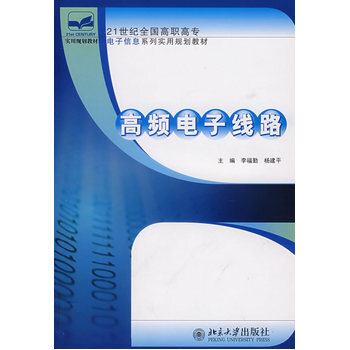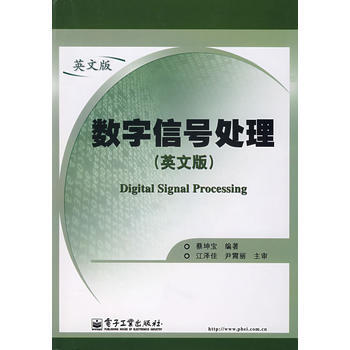

具体描述
基本信息
书名:数字信号处理(英文版)
定价:39.80元
作者:蔡坤宝著
出版社:电子工业出版社
出版日期:2007-08-01
ISBN:9787121047633
字数:999600
页码:392
版次:1
装帧:平装
开本:
商品重量:0.640kg
编辑推荐
内容提要
本书系统地阐述了数字信号处理所涉及的信号与系统分析和系统设计的基本理论、基本分析与设计方法、基本算法和处理技术。全书共10章,主要内容包括:离散时间信号与系统的基本概念,离散时间信号与系统的变换域分析,包括z变换和离散时间傅里叶变换、连续时间信号的抽样与重建,离散傅里叶变换及其快速算法(FFT),数字滤波器实现的基本结构,IIR和FIR 数字滤波器的设计原理与基本设计方法,数字信号处理中的有限字长效应,多抽样率数字信号处理。本书配有多媒体电子课件、英文版教学大纲、习题指导与实验手册。
本书可以作为电子与通信相关专业的本科数字信号处理课程中英文双语教学的教材,或中文授课的英文版教学参考书,也可供从事数字信号处理的工程技术人员学习参考。本书尤其适合初步开展数字信号处理课程中英文双语授课的教师与学生选用。
目录
1 Introduction
1.1 What Is a Signal
1.2 What Is a System
1.3 What Is Signal Processing
1.4 Classification of Signals
1.4.1 Deterministic and Random Signals
1.4.2 Continuous-Time and Discrete-Time Signals
1.4.3 Periodic Signals and Nonperiodic Signals
1.4.4 Energy Signals and Power Signals
1.5 Overview of Digital Signal Processing
2 Discrete-Time Signals and Systems
2.1 Discrete-Time Signals: Sequences
2.1.1 Operation on Sequences
2.2 Basic Sequences
2.2.1 Some Basic Sequences
2.2.2 Periodicity of Sequences
2.2.3 Representation of Arbitrary Sequences
2.3 Discrete-Time systems
2.3.1 Classification of Discrete-Time systems
2.4 Time-Domain Representations of LTI Systems
2.4.1 The Linear Convolution Sum
2.4.2 Interconnections of LTI Systems
2.4.3 Stability Condition of LTI systems
2.4.4 Causality Condition of LTI systems
2.4.5 Causal and Anticausal Sequences
2.5 Linear Constant-Coefficient Difference Equations
2.5.1 Recursive Solution of Difference Equations
2.5.2 Classical Solution of Difference Equations
2.5.3 Zero-Input Response and Zero-State Response
2.5.4 The Impulse Response of Causal LTI Systems
2.5.5 Recursive Solution of Impulse Responses
2.5.6 Classification of LTI Discrete-Time Systems
Problems
3 Transform-Domain Analysis of Discrete-Time Signals and Systems
3.1 The z-Transform
3.1.1 Definition of the z-Transform
3.1.2 A General Shape of the Region of Convergence
3.1.3 Uniqueness of the z-Transform
3.2 Relation Between the ROCs and Sequence Types
3.3 The z-Transform of Basic Sequences
3.4 The Inverse z-Transform
3.4.1 Contour Integral Method
3.4.2 Partial Fraction Expansion Method
3.4.3 Long Division Method
3.4.4 Power Series Expansion Method
3.5 Properties of the z-Transform
3.6 The Discrete-Time Fourier Transform
3.6.1 Definition of the Discrete-Time Fourier Transform
3.6.2 Convergence Criteria
3.6.3 Properties of the Discrete-Time Fourier Transform
3.6.4 Symmetry Properties of the Discrete-Time Fourier Transform
3.7 Transform-Domain Analysis of LTI Discrete-Time Systems
3.7.1 The Frequency Response of Systems
3.7.2 The Transfer Function of LTI Systems
3.7.3 Geometric Evaluation of the Frequency Response
3.8 Sampling of Continuous-Time Signals
3.8.1 Periodic Sampling
3.8.2 Reconstruction of Bandlimited Signals
3.9 Relations of the z-Transform to the Laplace Transform
Problems
4 The Discrete Fourier,Transform
4.1 The Discrete Fourier Series
4.2 Properties of the Discrete Fourier Series
4.2.1 Evaluation of the Periodic Convolution Sum
4.3 The Discrete Fourier Transform
4.4 Properties of the Discrete Fourier Transform
4.4.1 Circular Convolution Theorems
4.5 Linear Convolutions Evaluated by the Circular Convolution
4.6 Linear Time-Invariant Systems Implemented by the DFT
4.7 Sampling and Reconstruction in the z-Domain
4.8 Fourier Analysis of Continuous-Time Signals Using the DFT
4.8.1 Fourier Analysis of Nonperiodic Continuous-Time Signals
4.8.2 Practical Considerations
4.8.3 Spectral Analysis of Sinusoidal Signals
Problems
5 Fast Fourier Transform Algorithms
5.1 Direct Computation and Efficiency Improvement of the DFT
5.2 Decimation-in-Time FFT Algorithm with Radix-2
5.2.1 Butterfly-Branch Transmittance of the Decimation-in-Time FFT
5.2.2 In-Place Computations
5.3 Decimation-in-Frequency FFT Algorithm with Radix-2
5.4 Computational Method of the Inverse FFT
Problems
6 Digital Filtor Structures
6.1 Description of the Digital Filter Structures
6.2 Basic Structures for I1R Digital Filters
6.2.1 Direct Form
6.2.2 Direct Form
6.2.3 Cascade Form
6.2.4 Parallel Form
6.3 Basic Structures for FIR Digital Filters
6.3.1 Direct Forms
6.3.2 Cascade Forms
6.3.3 Linear-Phase Forms
6.3.4 Frequency Sampling Form
Problems
7 Design Techniques of Digital IIR Filters
7.1 Preliminary Considerations
7.1.1 Frequency Response of Digital Filters
7.2 Discrete-Time Systems Characterized by Phase Properties
7.3 Allpass Systems
7.3.1 Nonminimum-Phase Systems Represented by a Cascade Connection
7.3.2 Group Delay of the Minimum-Phase Systems
7.3.3 Energy Delay of the Minimum-Phase Systems
7.4 Analog-to-Digital Filter Transformations
7.4.1 Impulse Invariance Transformation
7.4.2 Step Invariance Transformation
7.4.3 Bilinear Transformation
7.5 Design of Analog Prototype Filters
7.5.1 Analog Butterworth Lowpass Filters
7.5.2 Analog Chebyshev Lowpass Filters
7.6 Design of Lowpass IIR Digital Filters
7.6.1 Design of Lowpass Digital Filters Using the Impulse Invariance
7.6.2 Design of Lowpass Digital Filters Using the Bilinear Transformation
7.7 Design of IIR Digital Filters Using Analog Frequency Transformations
7.7.1 Design of Bandpass IIR Digital Filters
7.7.2 Design of Bandstop I]R Digital Filters
7.7.3 Design of Highpass IIR Digital Filters
7.8 Design of IIR Digital Filters Using Digital Frequency Transformations
7.8.1 Lowpass-to-Lowpass Transformation
7.8.2 Lowpass-to-Highpass Transformation
7.8.3 Lowpass-to-Bandpass Transformation
7.8.4 Lowpass-to-Bandstop Transformation
Problems
8 Design of FIR Digital Filters
8.1 Properties of Linear Phase FIR Filters
8.1.1 The Impulse Response of Linear-Phase FIR Filters
8.1.2 The Frequency Response of Linear-Phase FIR Filters
8.1.3 Characteristics of Amplitude Functions
8.1.4 Constraints on Zero Locations
8.2 Design of Linear-Phase FIR Filters Using Windows
8.2.1 Basic Techniques
8.2.2 Window Functions
8.2.3 Design of Linear-Phase FIR Lowpass Filters Using Windows
8.2.4 Design of Linear-Phase FIR Bandpass Filters Using Windows
8.2.5 Design of Linear-Phase FIR Highpass Filters Using Windows
8.2.6 Design of Linear-Phase FIR Bandstop Filters Using Windows
Problems
9 Finite-Wordlength Effects in Digital Signal Processing
9.1 Binary Number Representation with its Quantization Errors
9.1.1 Fixed-Point Binary Representation of Numbers
9.1.2 Floating-Point Representation
9.1.3 Errors from Truncation and Rounding v
9.1.4 Statistical Model of the Quantization Errors
9.2 Analysis of the Quantization Errors in A/D Conversion
9.2.1 Statistical Model of the Quantization Errors
9.2.2 Transmission of the Quantization Noise through LTI Systems
9.3 Coefficient Quantization Effects in Digital Filters
9.3.1 Coefficient Quantization Effects in IIR Digital Filters
9.3.2 Statistical Analysis of Coefficient Quantization Effects
9.3.3 Coefficient Quantization Effects in FIR Filters
9.4 Round-off Effects in Digital Filters
9.4.1 Round-off Effects in Fixed-Point Realizations of ILR Filters
9.4.2 Dynamic Range Scaling in Fixed-Point Implementations of IIR Filters
9.5 Limit-Cycle Oscillations in Realizations of IIR Digital Filters
9.5.1 Zero-Input Limit Cycle Oscillations
9.5.2 Limit Cycles Due to Overflow
9.6 Round-off Errors in FFT Algorithms
9.6.1 Round-off Errors in the Direct DFT Computation
9.6.2 Round-off Errors in Fixed-point FFT Realization
Problems
10 Multirate Digital Signal Processing
10.1 Sampling Rate Changed by an Integer Factor
10.1.1 Downsampling with an Integer Factor M
10.1.2 Decimation by an Integer Factor M
10.1.3 Upsampling with an Integer Factor L
10.1.4 Interpolation by an Integer Factor L
10.2 Sampling Rate Conversion by a Rational Factor
10.3 Efficient Structures for Sampling Rate Conversion
10.3.1 Equivalent Cascade Structures
10.3.2 Polyphase Depositions
10.3.3 Polyphase Realization of Decimation Filters
10.3.4 Polyphase Realization of Interpolation Filters
Problems
Appendix A Tables for the z-Transform
Appendix B Table for Properties of the Discrete-Time Fourier Transform
Appendix C Table for Properties of the Discrete Fourier Series
Appendix D Table for Properties of the Discrete Fourier Transform
Appendix E Table for the Normalized Butterworth Lowpass Filters
Appendix F Answers To Partial Problems
References
作者介绍
蔡坤宝,博士,重庆大学通信工程学院教授,信号与信息处理硕士学位点负责人。多年来致力于*信号的产生与处理、生物组织粘弹性波动的有限元分析、现代信号处理及其应用和人工神经网络等方面的研究工作。十余年来,积极探索和实施中英文双语教学,现任重庆市级精品课程“信
文摘
序言
用户评价
作为一个在业界摸爬滚打了几年,但仍想系统性回顾和提升理论深度的工程师,我发现这本书的价值远超出了普通的参考书范畴。它的深度足以让资深专家进行知识的再审视,而其清晰的讲解结构又不会让有一定基础的人感到过于晦涩。书中的习题设计非常巧妙,它们并非那种纯粹的机械计算,而是巧妙地融入了设计和分析的思考过程,迫使读者去权衡不同算法的优劣和适用场景。我特别喜欢它在某一章节末尾对“选择何种滤波器的决策树”的讨论,那简直就是将经验总结成了清晰的流程图。这种将理论知识转化为决策工具的能力,是许多教材所欠缺的。这本书更像是一份职场进阶的秘密武器,帮你从“会做”提升到“精通”。
评分这本书的排版和装帧简直是一场视觉的盛宴,每一个章节的布局都经过了深思熟虑,让人在阅读过程中感到无比的愉悦。作者在处理复杂概念时,总能找到一种优雅而直观的表达方式,即便是初学者也能迅速抓住核心要点。我尤其欣赏它在理论与实践之间的精妙平衡,书中穿插的大量实际案例分析,让那些抽象的数学公式瞬间变得生动起来,仿佛我正在亲手操作一个真实的信号处理系统。对于那些希望将所学知识应用于工程实践的读者来说,这本教材无疑是架起理论与实际应用之间最好的桥梁。翻阅起来,那种厚重却不失精致的手感,也让我在深夜阅读时,多了一份沉静与专注。它不仅仅是一本教科书,更像是一位经验丰富的导师,耐心地引导着我一步步揭开数字信号处理的神秘面纱。书中对最新技术趋势的关注也令人印象深刻,显示出作者紧跟时代步伐的专业素养。
评分这本书的语言风格带着一种独特的英式学术的精确与克制,每一个词汇的选择都仿佛经过了精确的权衡,力求在准确性上达到极致。对于那些习惯于接触直白、口语化教材的读者来说,初期可能需要适应这种略显正式的学术腔调,但一旦适应,你就会发现这种精确性带来的巨大好处——极少出现歧义,概念定义清晰到容不下任何含糊不清的解释。它在引入新的数学工具时,总是先给出其在信号处理中的具体应用场景,再进行深入的数学推导,这种“应用驱动理论”的编排方式,极大地激发了我的学习兴趣,让我始终保持着“我为什么要学这个”的明确目标感。这本教材的严谨,让我对它所涵盖的所有知识点都充满了信心。
评分这本书的叙述风格极其严谨且逻辑缜密,几乎找不到任何可以挑剔的逻辑漏洞。作者似乎对数字信号处理领域的每一个角落都进行了深入的挖掘和梳理,知识体系的构建层次分明,从最基础的离散时间系统分析,到高级的滤波器设计和快速傅里叶变换(FFT)的应用,衔接得天衣无缝。我发现,很多我之前在其他资料中感到晦涩难懂的地方,通过这本书的阐述后,豁然开朗。特别是对Z变换和傅里叶分析的深度剖析,简直是教科书级别的范本。它要求读者投入相当的精力去理解每一个推导过程,但所有的付出都是值得的,因为它为你打下了极其坚实的基础。读完它,我感觉自己对信号的本质有了更深层次的理解,不再是简单地套用公式,而是真正理解了它们背后的数学原理和物理意义。
评分这本书的覆盖面广度令人称奇,它并没有将自己局限于传统的DSP范畴,而是巧妙地引入了诸如自适应滤波、小波分析等前沿话题,并给予了足够的篇幅进行介绍和初步探讨。这使得它在保持经典理论深度的同时,也具备了极强的“前瞻性”。我特别欣赏作者在描述算法复杂度分析时所采取的对比方法,他不仅仅给出了大O表示法,还结合现代计算平台的特性,讨论了算法在实际执行时间上的差异,这种细节的把控,充分体现了作者深厚的工程背景。阅读此书的过程,就像是与一位经验丰富的大学教授进行一对一的深度交流,他不仅告诉你“是什么”,更重要的是告诉你“为什么是这样”,以及“在什么情况下应该换一种思路”。总而言之,这是一部值得反复研读的经典之作。
相关图书
本站所有内容均为互联网搜索引擎提供的公开搜索信息,本站不存储任何数据与内容,任何内容与数据均与本站无关,如有需要请联系相关搜索引擎包括但不限于百度,google,bing,sogou 等
© 2025 book.cndgn.com All Rights Reserved. 新城书站 版权所有

